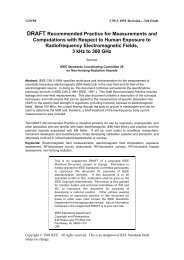An introduction to the quark model
An introduction to the quark model
An introduction to the quark model
Create successful ePaper yourself
Turn your PDF publications into a flip-book with our unique Google optimized e-Paper software.
Few-charge systems His<strong>to</strong>ry of <strong>the</strong> <strong>quark</strong> <strong>model</strong> Mesons Baryons Multi<strong>quark</strong>s and o<strong>the</strong>r exotics Outlook<br />
Chromoelectric binding: equal masses<br />
Both Ps2 and (qq¯q¯q), and <strong>the</strong>ir thresholds are governed by<br />
H4 = <br />
i<br />
p2 i<br />
2 m − [ pi ] 2<br />
8 m<br />
<br />
+ gij v(rij) , <br />
gij = 2 ,<br />
For this family of Hamil<strong>to</strong>nians, <strong>the</strong> highest ground state obtained<br />
for gij = ¯g = 2/15.<br />
Then, <strong>the</strong> more one departs from this symmetric case, <strong>the</strong> lower<br />
<strong>the</strong> binding<br />
Can be measured by <strong>the</strong> variance of <strong>the</strong> {gij} set of coefficients<br />
State Pair 12 34 13 24 14 23 ¯g ∆g<br />
Threshold 0 0 1 1 0 0 1/3 0.22<br />
Ps2 −1 −1 1 1 −1 −1 1/3 0.89<br />
T 1/2 1/2 1/4 1/4 1/4 1/4 1/3 0.01<br />
M −1/4 −1/4 5/8 5/8 5/8 5/8 1/3 0.17<br />
i

















